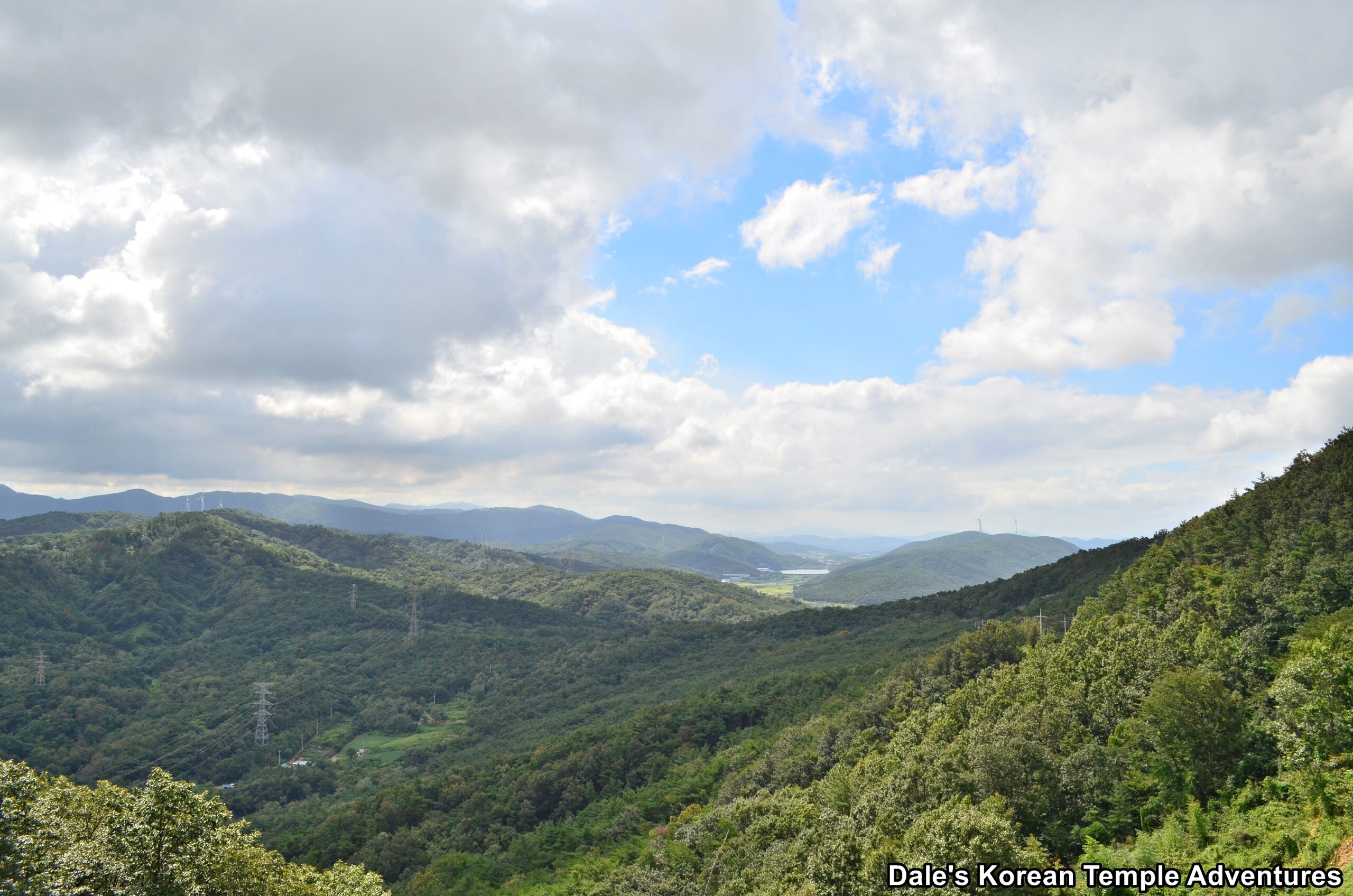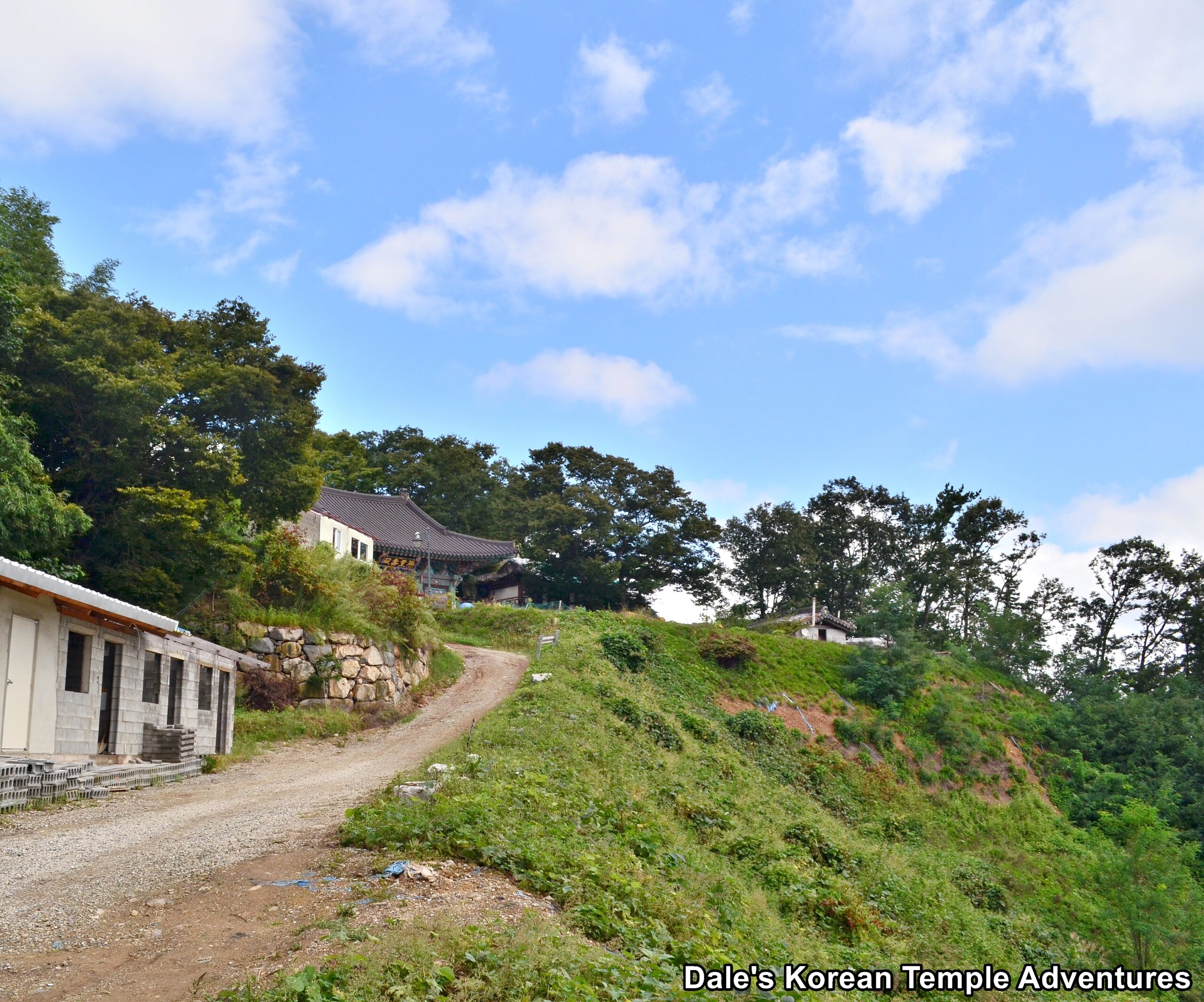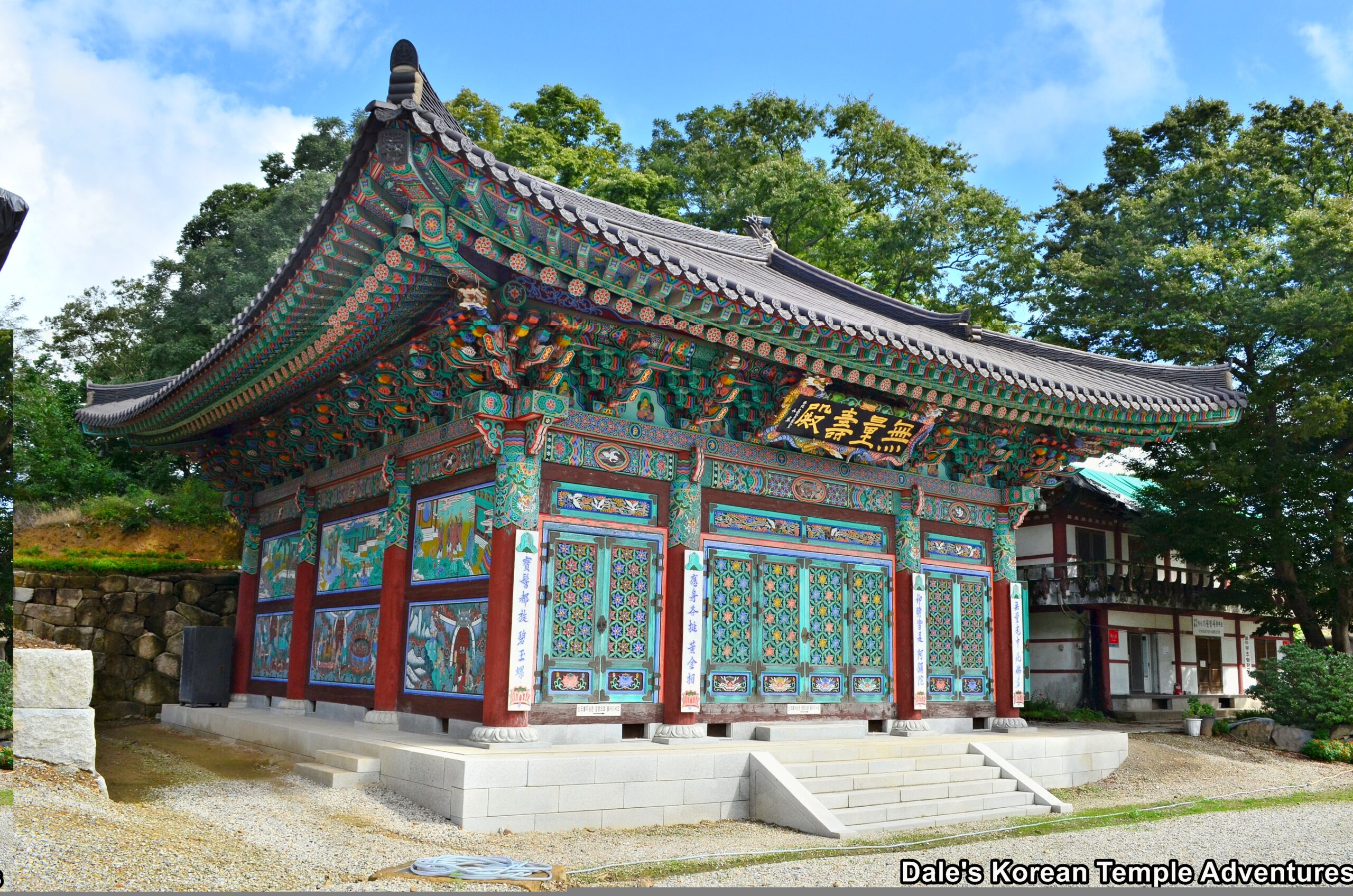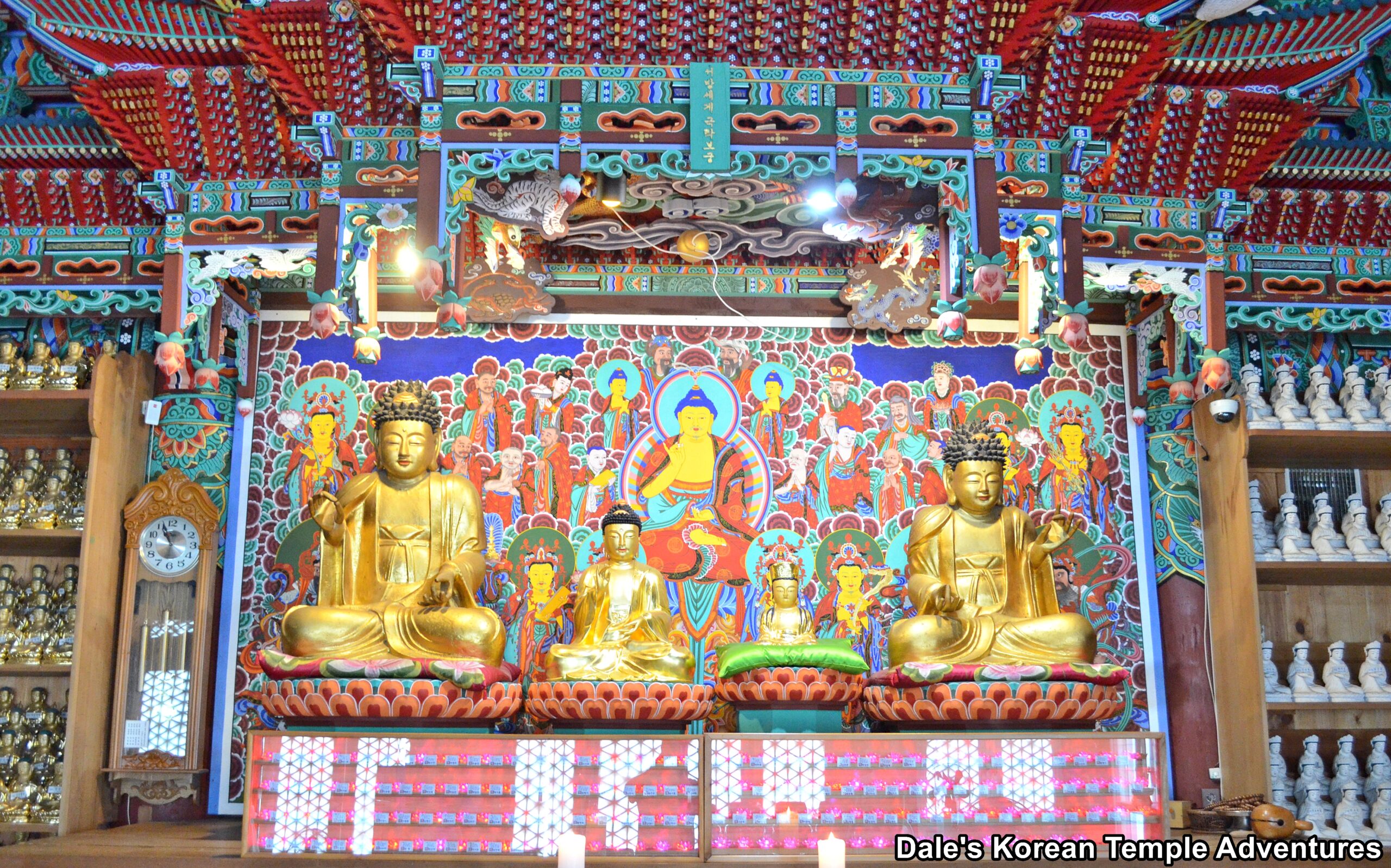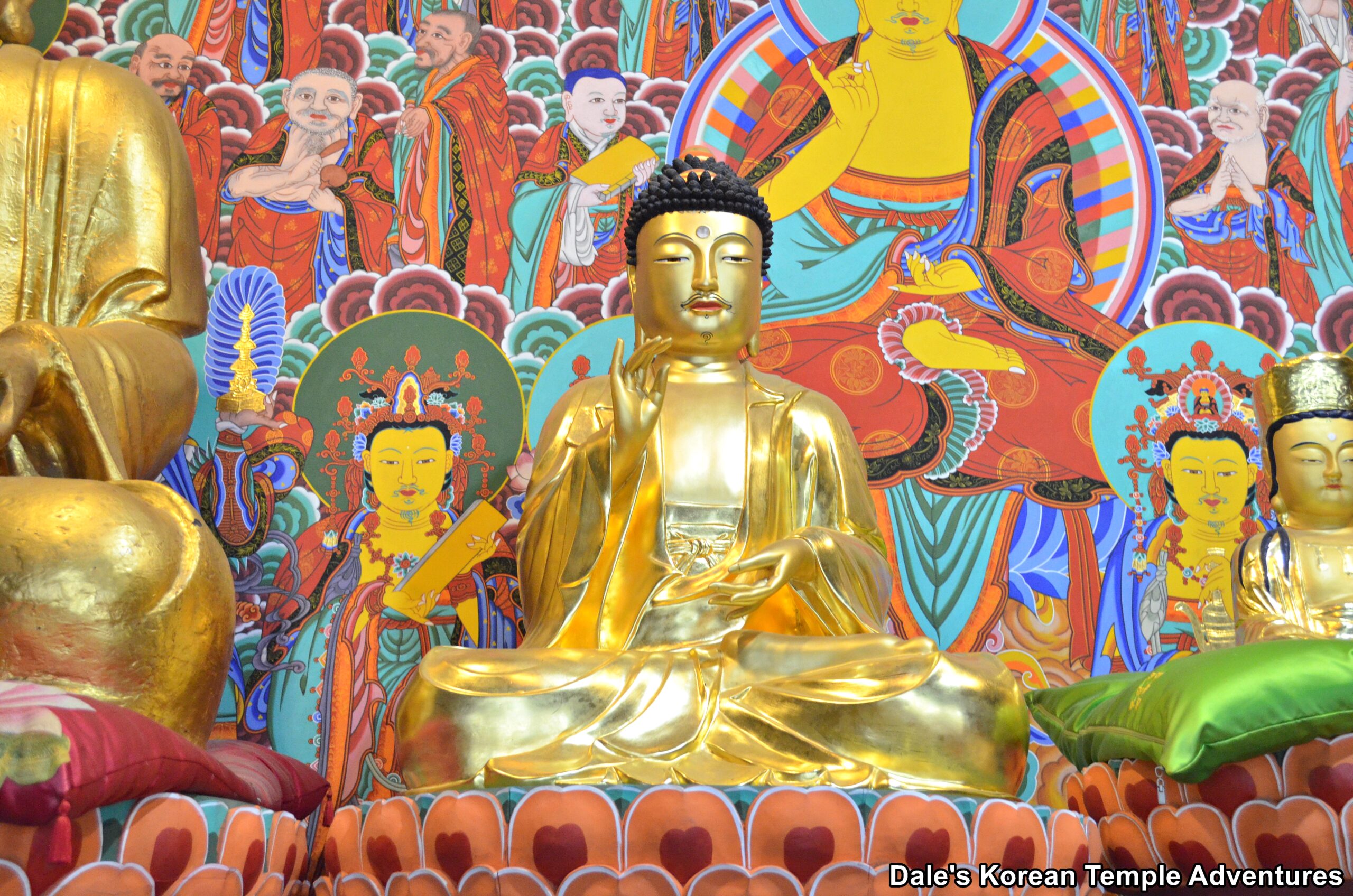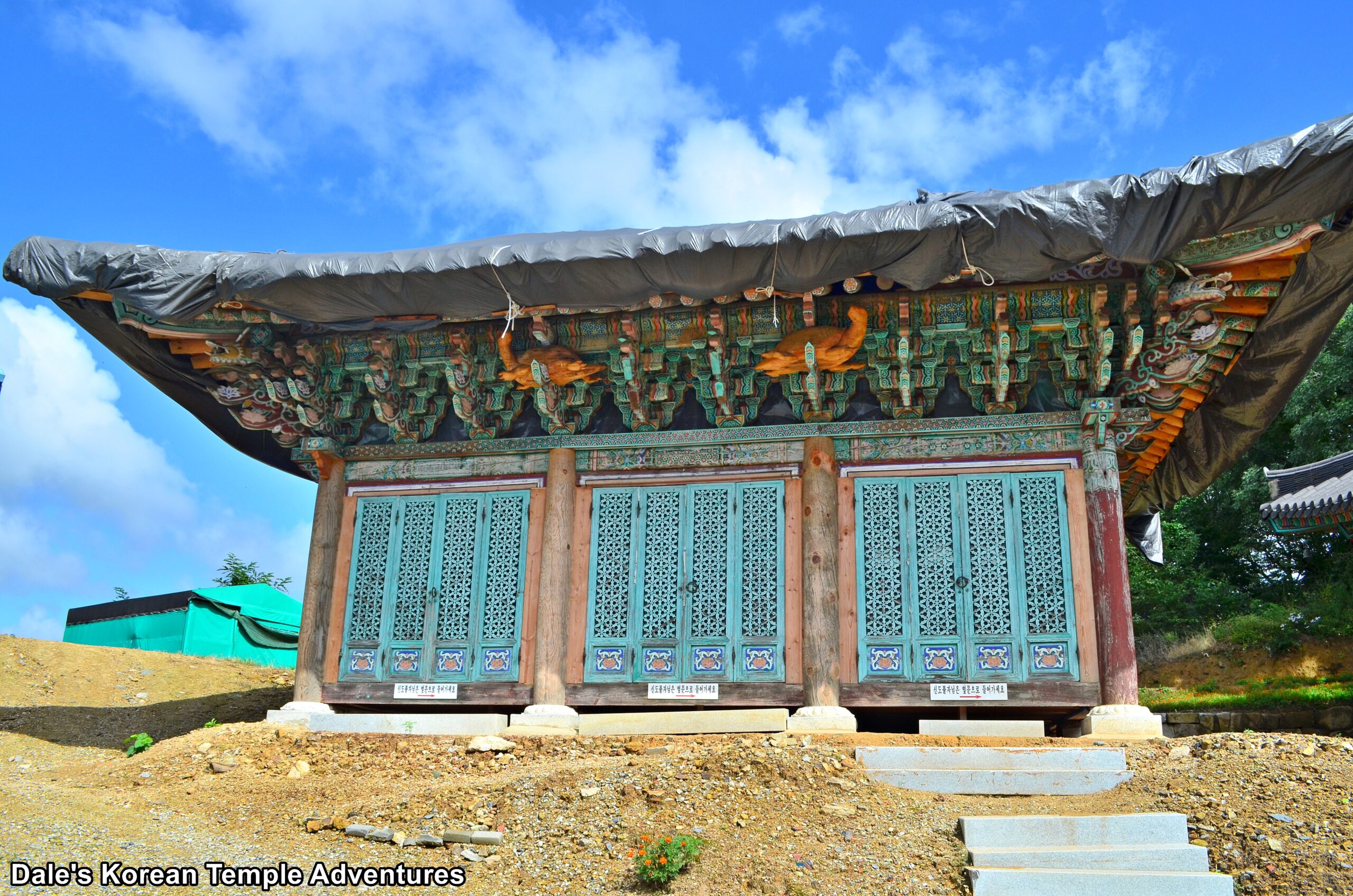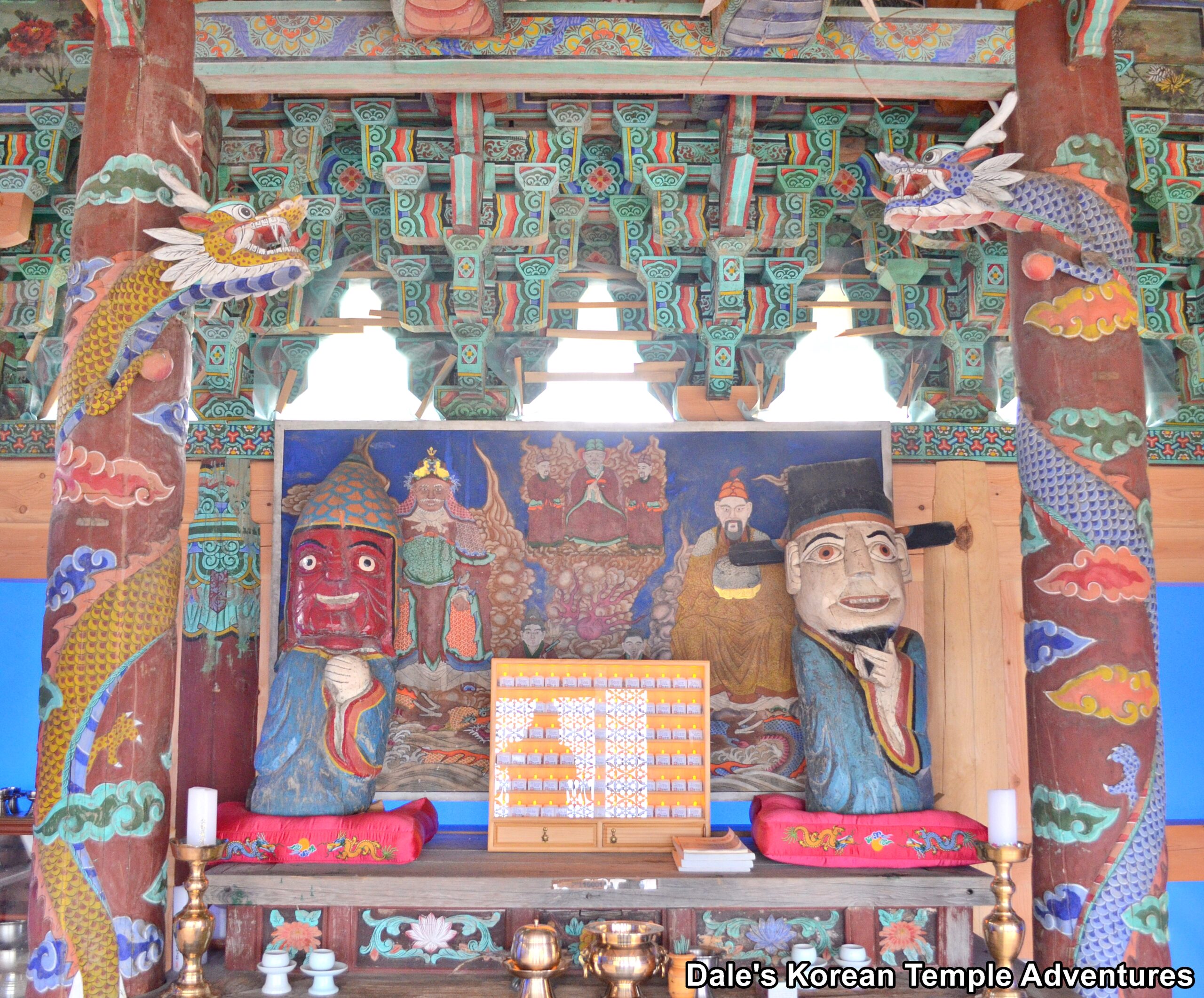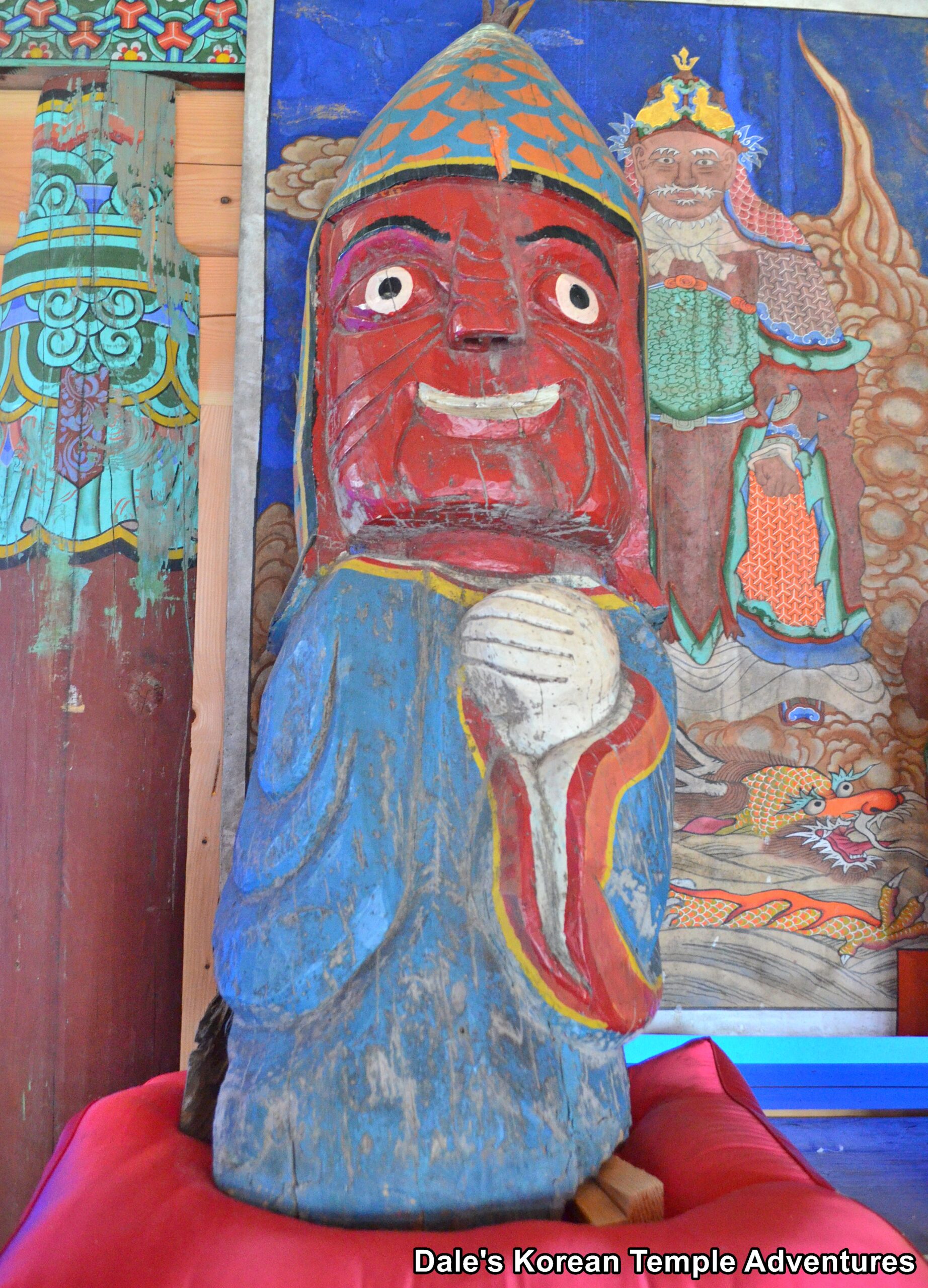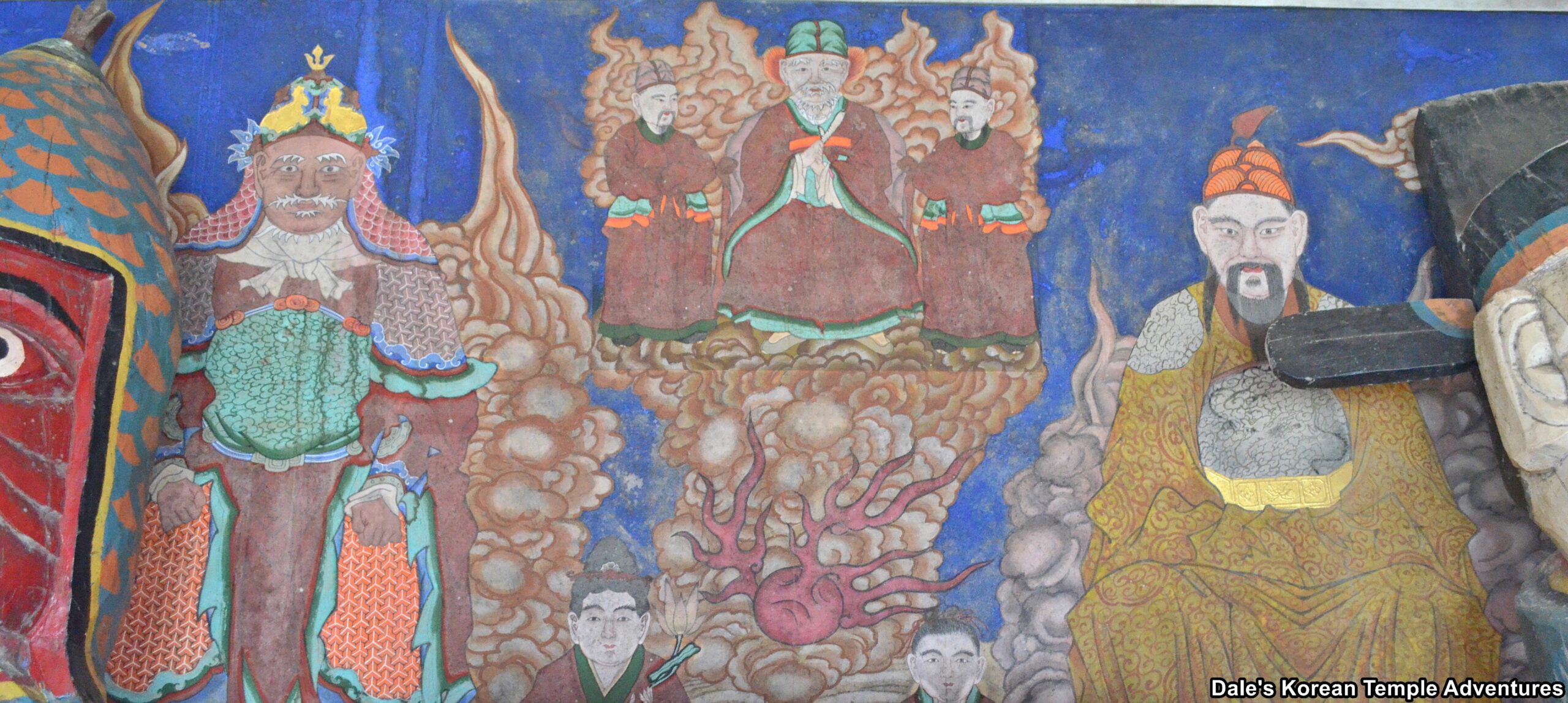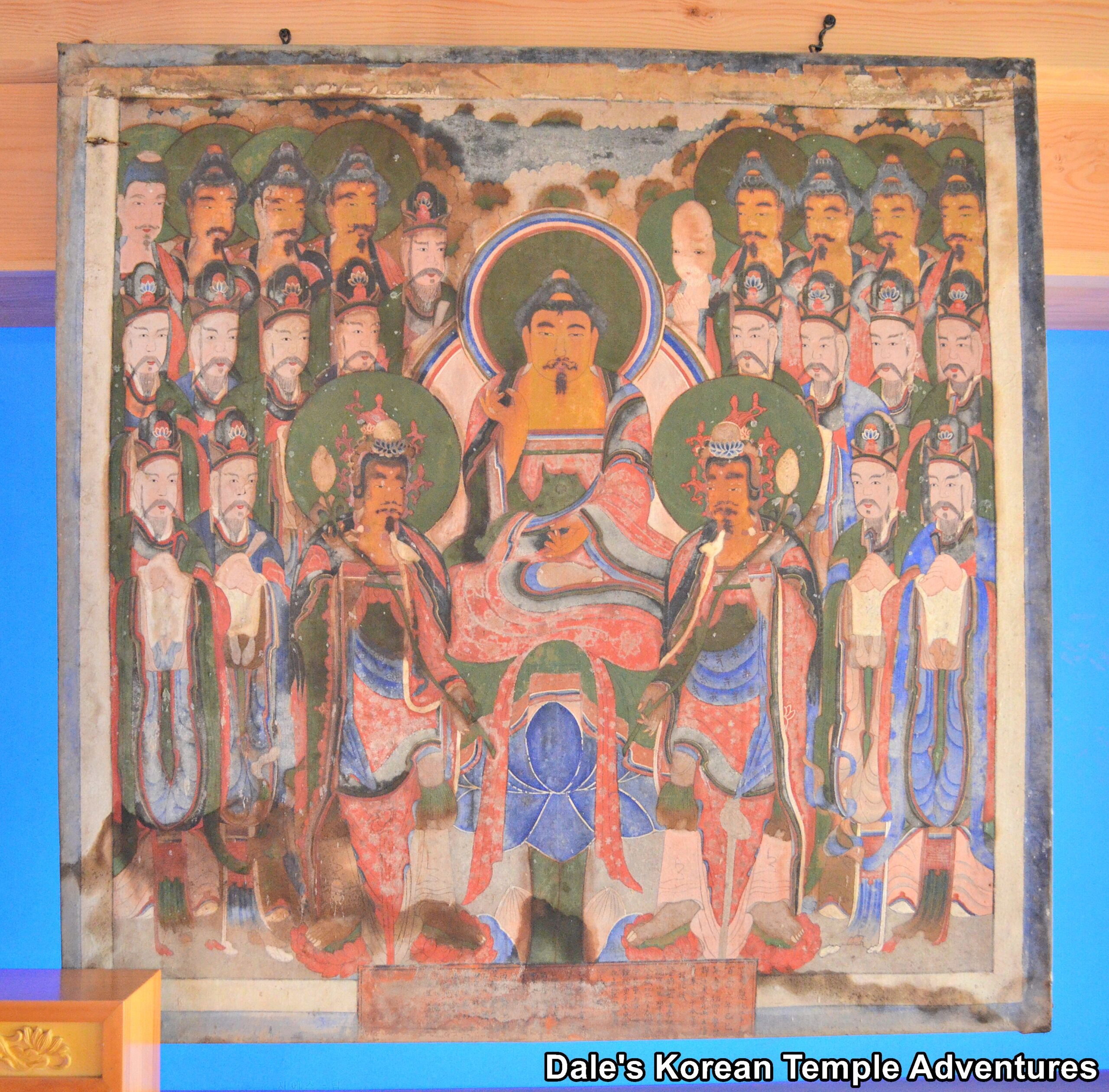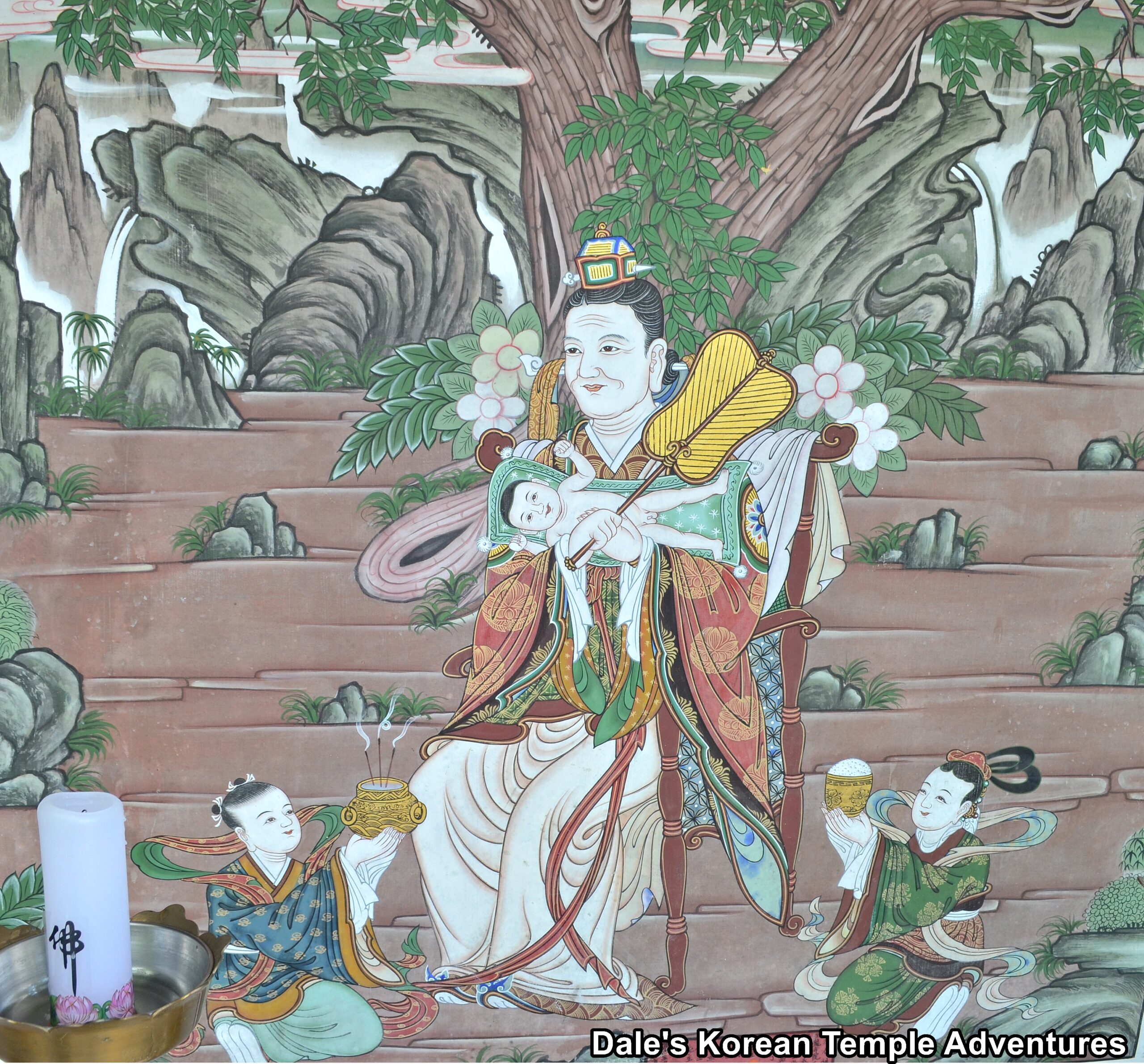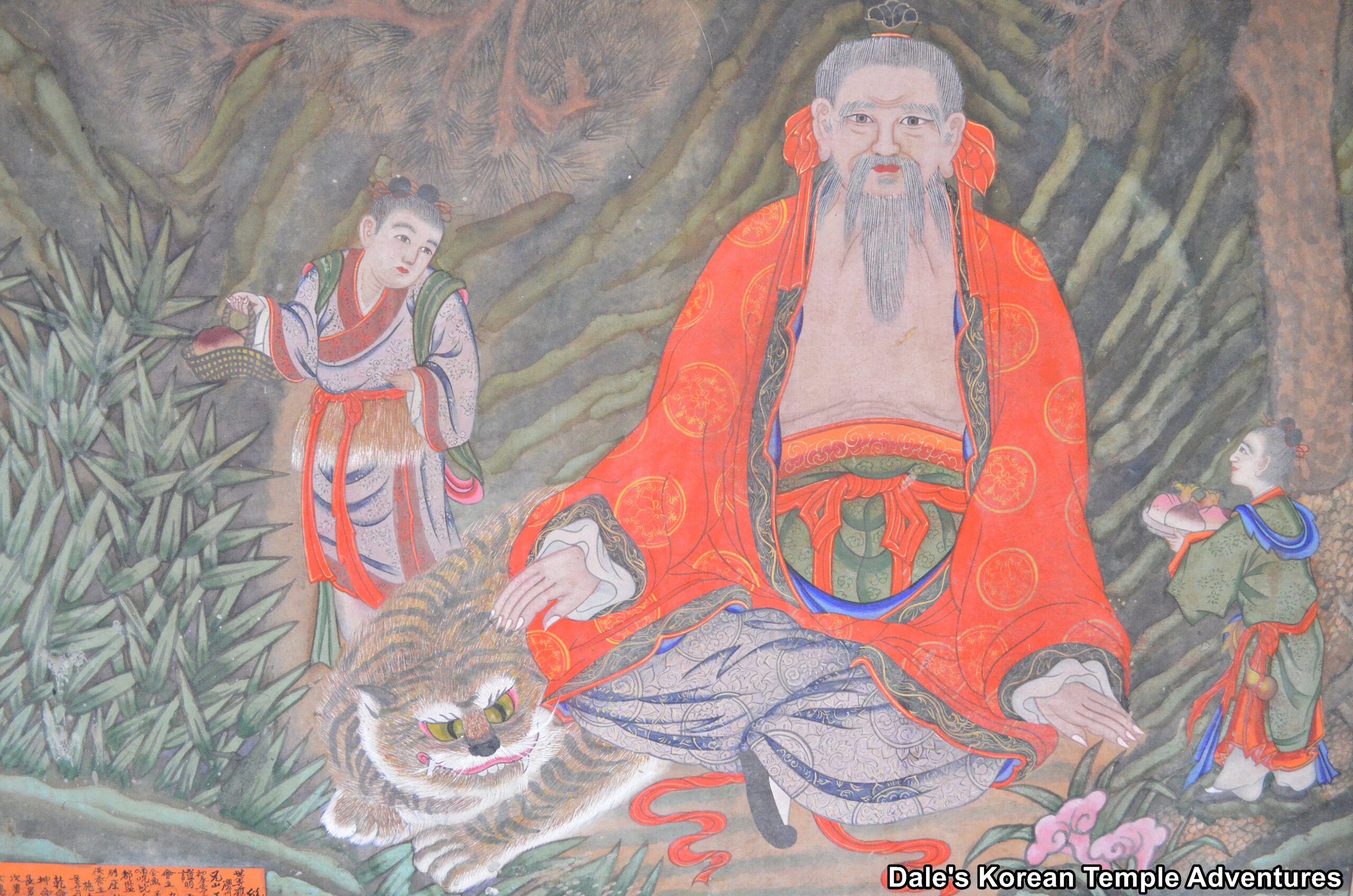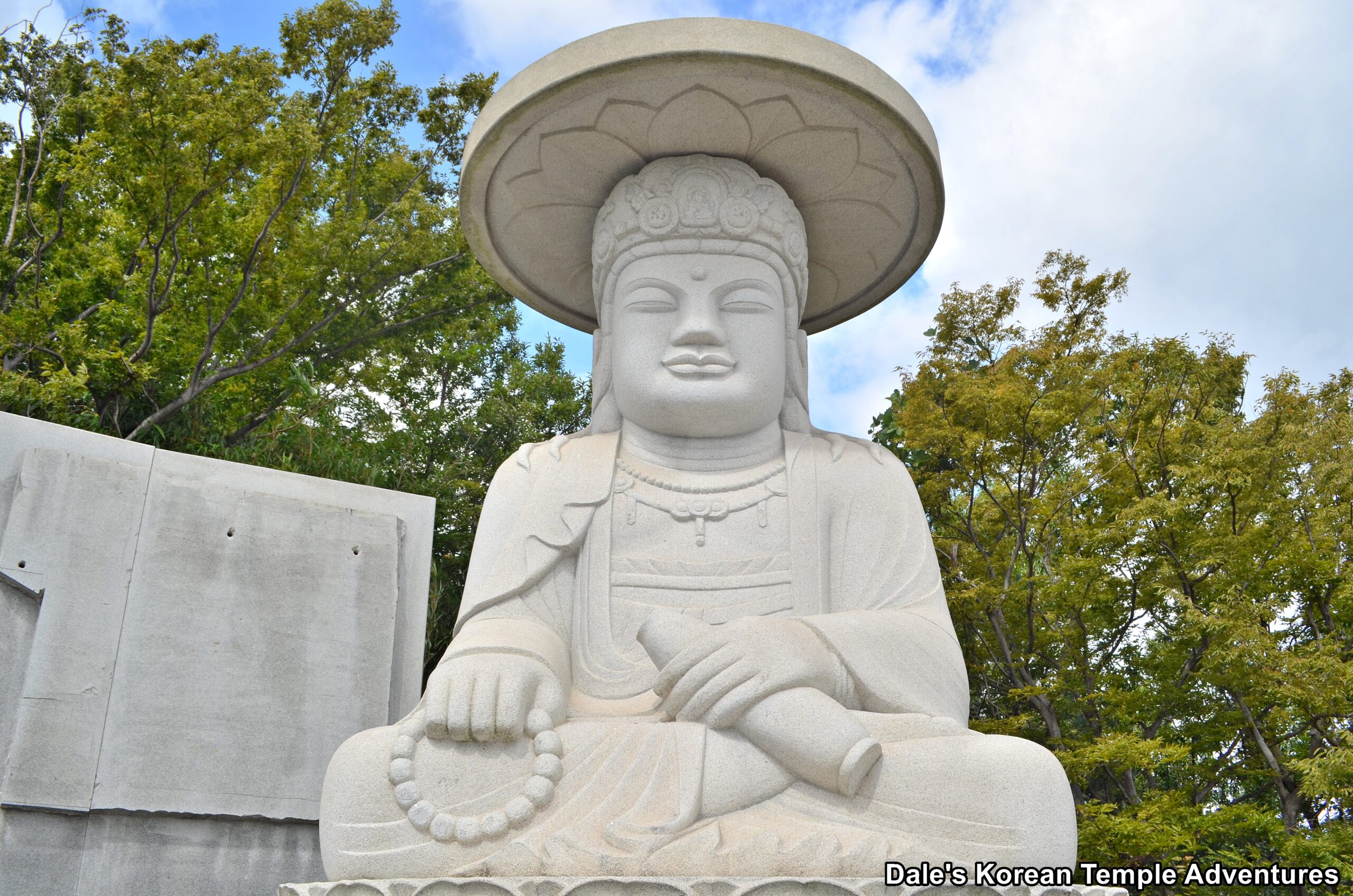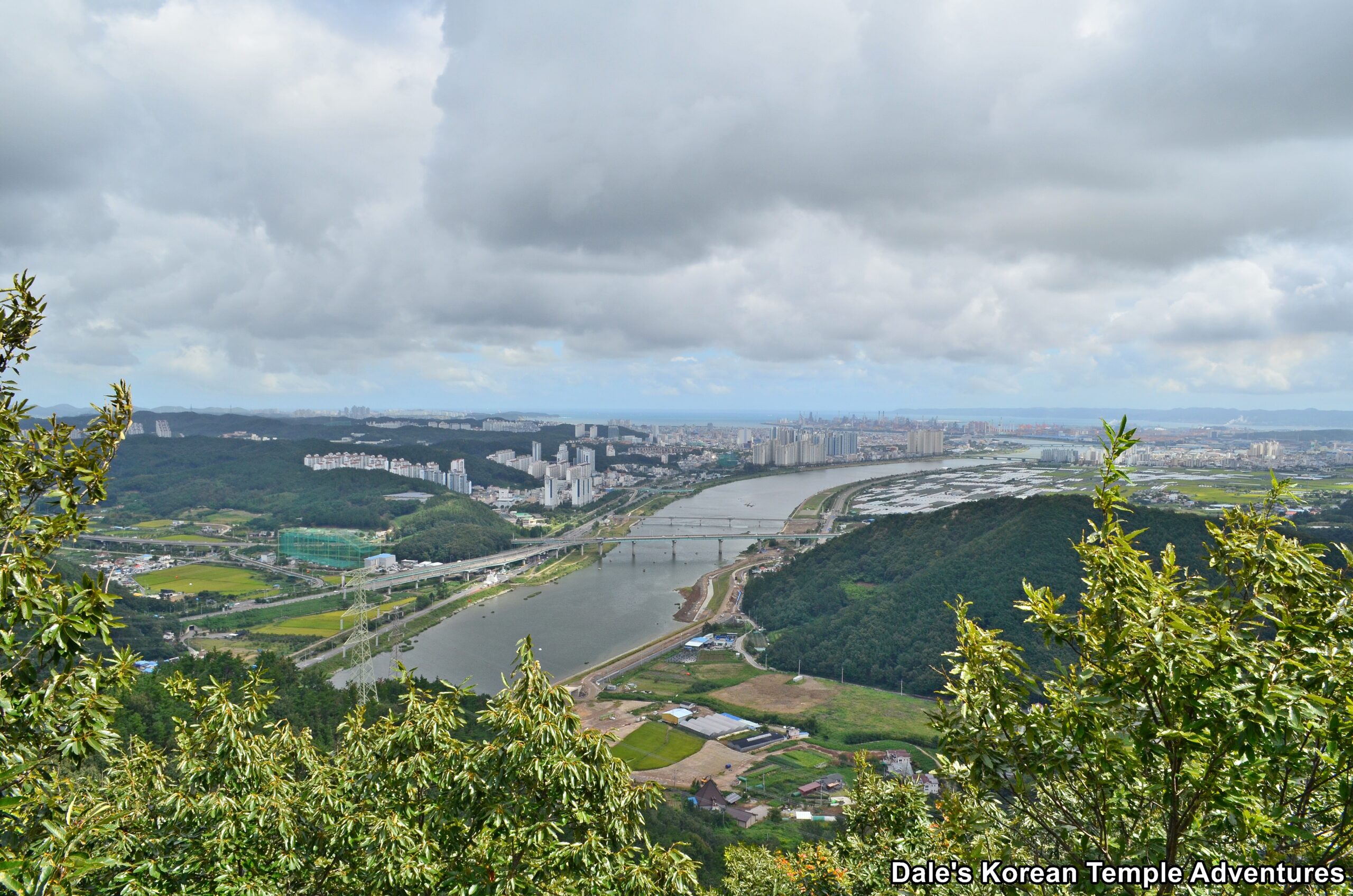Giwonjeongsa Temple – 기원정사 (Gyeongju)
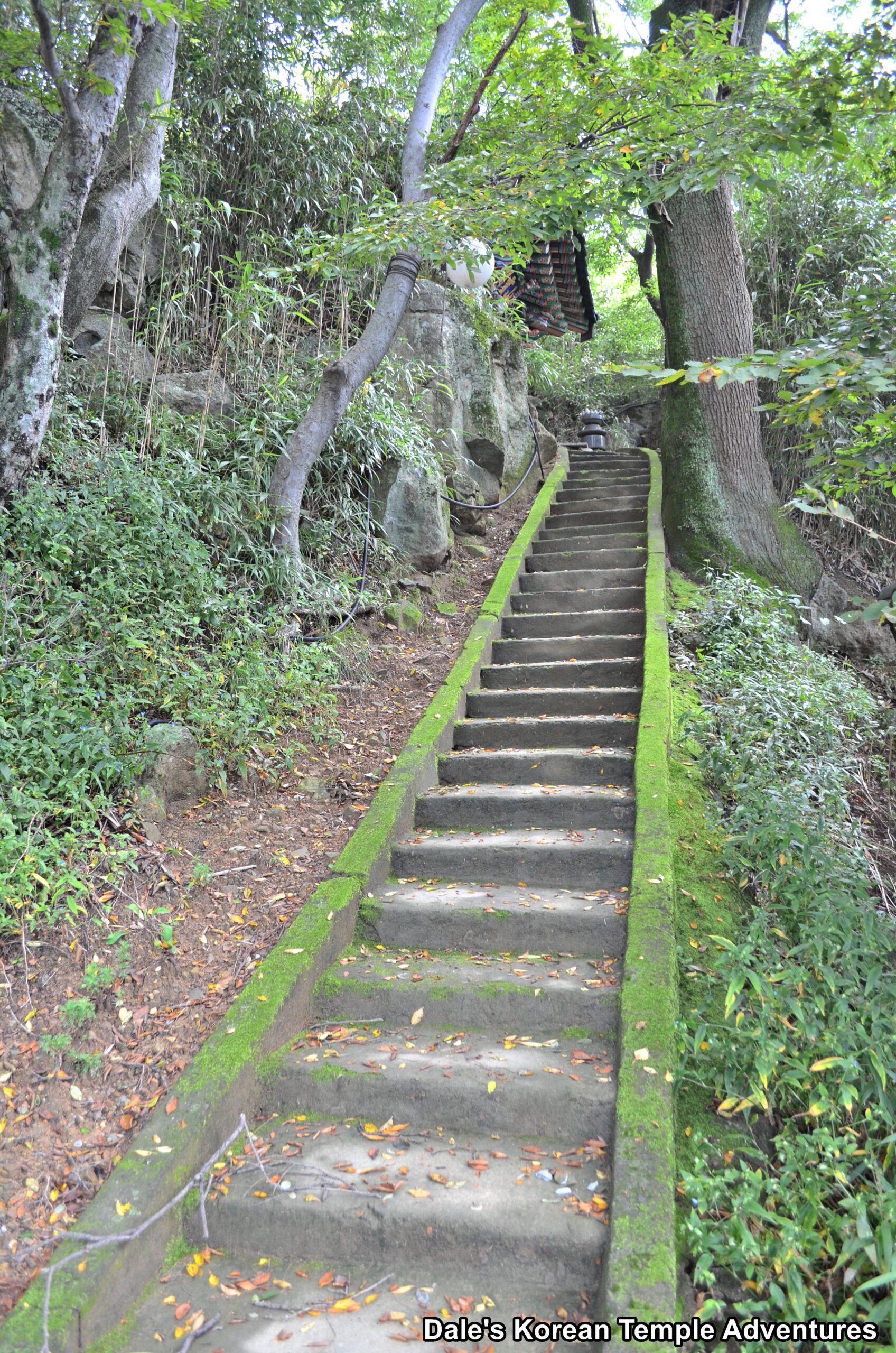
Temple History
Giwonjeongsa Temple is located in the far eastern part of Gyeongju on Mt. Hyeongsan (257.1 m). In fact, it’s so far east, it almost runs up against the city limits of Pohang, Gyeongsangbuk-do. Purportedly, the temple was originally built 1,300 years ago during the Silla Dynasty (57 B.C. – 935 A.D.). Later, and in 1995, the abbot of the temple found the current location and decided to build a temple on the site because it looked like a blue dragon turning its head. The name of the temple is a reference to Jetavana, which is where the Buddha gave the majority of his vassas (three month annual retreat). In fact, the Buddha gave 19 of his 45 vassas at this temple. The temple was donated to the Buddha by Anathapindika.
Giwonjeongsa Temple is home to the “Wooden Seated Amitabha Buddha of Wangnyongsawon Temple,” which is Korean Treasure #1615. The temple is also home to a pair of wooden statues, Muinsang (figure of a warrior) and Muninsang (a figure of a scholar), which are Folk Cultural Property in Gyeongsangbuk-do #73.
Temple Layout
You first make your way up to Giwonjeongsa Temple up a long mountain dirt road for about 2 kilometres. You’ll eventually come to the temple grounds, where it looks like a bathroom facility was being built but left incomplete. A little further along, and a bit up the hillside, is a budowon.
In a bend in the dirt road, you’ll come to the main temple grounds. The large main hall, which is about 15 years old, is a Muryangsu-jeon Hall. The exterior walls of the Muryangsu-jeon Hall are adorned with elaborate murals with various motifs like Amita-bul (The Buddha of the Western Paradise) murals, the Siwang (The Ten Kings of the Underworld), and murals dedicated to Seokgamoni-bul (The Historical Buddha).
Stepping inside the Muryangsu-jeon Hall, you’ll find a rather odd collection of statues on the main altar. Instead of there being a triad, there are four distinct statues. These statues seem to have been collected rather than originating as a triad. Of these four statues, it’s the centre left statue that stands out the most. This statue is officially known as the “Wooden Seated Amitabha Buddha of Wangnyongsawon Temple,” which is Korean Treasure #1615. According to the scroll found inside this statue of Amita-bul, which was entitled “Hwanseongsa Amitabha samjon joseong gyeorwonmun (Purpose of Creation of the Amitabha Buddha Statue of Hwanseongsa),” the statue was created in 1466 and was completed in 1474. The creation of the statue was sponsored by a large number of patrons that included members of the royal family, local officials, and regular citizens. The statue, as described by the scroll inside the historic statue, tells us that it was created by two monk artists, Seongryo and Hyejeong. As for the statue itself, it has rather broad knees, and it has a long torso under narrow shoulders. As for the face of the statue, it appears a little gaunt when compared to other statues from the late Goryeo Dynasty (918-1392). The robe of Amita-bul folds sharply over its knees. This statue is particularly important because of the detailed information found inside it. It clearly details when it was made, by whom, and who sponsored its creation.
Joining the “Wooden Seated Amitabha Buddha of Wangnyongsawon Temple” on the main altar, and directly to the centre right, is a small statue dedicated to Gwanseeum-bosal (The Bodhisattva of Compassion). And book-ending the two smaller statues are two less sophisticated statues with spiky hair dedicated to Amita-bul, as well. All four rest under a long rectangular datjib (canopy) that are protected on the underside by two swirling dragons. On the far right wall hangs a modern Shinjung Taenghwa (Guardian Mural). And to the left of the main altar are statuettes dedicated to Jijang-bosal (The Bodhisattva of the Afterlife), while to the right of the main altar are rows of statuettes dedicated to an all-white Gwanseeum-bosal.
To the left of the Muryangsu-jeon Hall is the Yongwang-jeon Hall. Formerly, there used to be murals dedicated to Yongwang (The Dragon King) that adorned the exterior walls, but it appears as though the shaman shrine hall is currently under renovation. Additionally, the roof of the Yongwang-jeon Hall is protected by a large tarp. Up near the front entry of the shrine hall, you’ll find a pair of wooden turtle statues on either side of where the absent signboard should be for the Yongwang-jeon Hall.
Stepping inside the Yongwang-jeon Hall, you’ll find two unique statues and altar painting on the main altar. These two wooden statues are Muinsang (figure of a warrior) and Muninsang (a figure of a scholar). The wooden image dedicated to Muinseok is positioned to the left, while the image dedicated to Muninseok is positioned to the right. Both are designated as Folk Cultural Property in Gyeongsangbuk-do #73 as of December 29th, 1987. It’s also believed that both were produced during the late Joseon Dynasty (1392-1910) and are about 200 years old. Both statues wear blue clothes and hide their hands in their clothing. Muinsang is wearing a large, blue spotted crown on his head and stroking his beard with his left hand, while Muinsang is smiling with his Samo (a thimble-like hat worn by government officials outside the house) on his head. He also strokes his beard with his left hand. As for the painting that backs these two wooden statues, it’s unclear who the two royal figures might be. There is some conjecture. One idea has the left figure representing King Gyeongsun of Silla (r. 927–935 A.D.) and the right figure being that of his son Crown Prince Maui. According to another interpretation by the temple itself, these two figures are King Muyeol of Silla (654-661 A.D.) and General Kim Yushin (595-673 A.D.). And perhaps another interpretation is that the two figures are those of King Munmu of Silla (661-681 A.D.) and his heir King Sinmun of Silla (681-692 A.D.). Upon his death, King Munmu of Silla purportedly transformed into a dragon to defend Silla. The exact quote by King Munmu of Silla is, “A country should not be without a king at any time. Let the Prince have my crown before he has my coffin. Cremate my remains and scatter the ashes in the sea where the whales live. I will become a dragon and thwart foreign invasion.” And between these two regal figures up in the celestial clouds are three individuals. The central figure appears to be that of Yongwang (The Dragon King) joined by two attendants. Floating down on the cloud towards the two royal figures is Yongwang’s red wisdom pearl, as though he is passing along and legitimizing their reigns from one king to another.
Behind the Muryangsu-jeon Hall is a glass enclosure with a painting. This painting appears to be a modern interpretation of Samshin Halmeoni (Three Spirits Grandmother). This shaman deity is the protector of children up to the age of seven, when Chilseong (The Seven Stars) starts to protect people. With a fan and baby in hand, Samshin Halmeoni looks off in the distance from her wooden chair.
To the rear of this outdoor shrine, and up a long set of moss-covered cement stairs, you’ll find the temple’s Sanshin-gak Hall. The exterior walls are adorned with beautiful murals of cranes and various other birds. Up near the signboard for the shaman shrine hall, you’ll find a pair of ferocious dragon heads. Stepping inside the Sanshin-gak Hall, you’ll find a red-clad image of Sanshin (The Mountain Spirit) joined by a yellow-eyed tiger.
To the right of the Muryangsu-jeon Hall, on the other hand, and past the monks quarters, is a modern statue dedicated to Gatbawi Gwanseeum-bosal (The Bodhisattva of Compassion) which was built in 2001. The base of the seated image dedicated to Gwanseeum-bosal are adorned with reliefs of the Eight Legions (The Eight Buddhist Deities that Defend the Dharma). In one hand, the Bodhisattva of Compassion holds a yeombul (prayer beads), and in the other a vessel. Beyond this statue, there’s a concrete wall and platform from which you can get an amazing look out towards Pohang and the Hyeongsan-gang river off in the distance. It’s a beautiful view especially at night.
How To Get There
There’s one really easy way to get to Giwonjeongsa Temple, and there’s one really hard way to get to Giwonjeongsa Temple. First, as for the easier of the two, you simply need to take a taxi from the Pohang Intercity Bus Terminal. The ride should take about 20 minutes, over 12 km, and it’ll cost you 12,000 won (one way).
As for the more difficult of the two, you can catch Bus #600 from the Pohang Intercity Bus Terminal. You’ll need to take this bus for 9 stops and get off at the Gangdong bus stop. The bus ride will take about 15 minutes. Now for the difficult part. Where the bus drops you off, you’ll need to hike 4.1 km, or 76 minutes, to get to the temple. Cross Saneop-ro road and head down Cheongang-ro road. The roads will twist and turn until you finally arrive at Giwonjeongsa Temple, but it’ll be quite the hike.
Overall Rating: 7.5/10
While the temple is newer, it definitely has some original features like the early Joseon-era “Wooden Seated Amitabha Buddha of Wangnyongsawon Temple,” the Samshin Halmeoni painting and shrine to the rear of the main hall, the amazing view down towards the sprawling industrial city of Pohang, Gyeongsangbuk-do; and arguably the most original of all, the contents of the Yongwang-jeon Hall with the two wooden statues dedicated to Muinsang (figure of a warrior) and Muninsang (a figure of a scholar), as well as the main altar painting that backs the two wooden statues. While this temple is little known, especially among all the other sites and sounds in Gyeongju, it certainly shouldn’t be overlooked.
